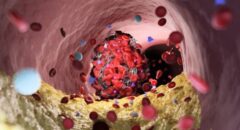
Congestive heart failure is a scary diagnosis nobody wants to hear, but what is the condition and how do you manage it?
Plenty of people are affected: Roughly 5.7 million Americans are living with congestive heart failure, with 670,000 new cases diagnosed each year, according to the American Heart Association (AHA).
But, in reality, having heart failure doesn’t mean that your heart will never work properly again. Just like there’s more than one reason for heart failure, there are several medical treatments available to help you live well with the condition, according to the National Heart, Lung, and Blood Institute (NHLBI).
To better understand how to prevent and manage heart failure, it is important to learn what it is, its stages, symptoms, causes and treatments, and the measures you can take to help lower your risk of developing the condition.
What is congestive heart failure?
Congestive heart failure occurs when your heart muscle is too stiff, weak or damaged to pump enough blood to meet your body’s needs, according to the NHLBI.
The condition can manifest itself in one of two ways. Acute heart failure comes on suddenly, while chronic heart failure develops over time. Both can lead to additional medical conditions, especially if left untreated. These include liver or kidney damage, irregular heartbeat, cardiac arrest and heart valve disease.
RELATED: Day 1: Just Diagnosed with Heart Failure
What are the 4 stages of congestive heart failure?
According to the National Center for Biotechnology Information, the four stages of congestive heart failure are:
- Stage A: A high risk for developing heart failure is present, but there are no symptoms or structural damage to the heart.
- Stage B: Structural damage to the heart is present with no symptoms.
- Stage C: Both structural damage and symptoms are present.
- Stage D: This is end-stage heart failure, which requires advanced treatment interventions such as a heart transplant.
What causes congestive heart failure?
The causes of heart failure depend on the type that you have, states the NHLBI. Most typically, the condition occurs on the left side of your heart, which pumps oxygen to the rest of your body. The measure for this pumping efficiency is known as “ejection fraction.”
Heart attack, coronary heart disease, heart valve disease, irregular heartbeat and genetically inherited heart conditions can all cause








